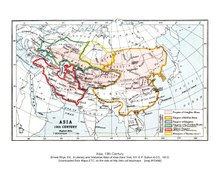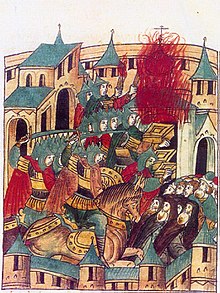| Part of a series on |
| Forced labour and slavery |
|---|
 |





The slave trade in the Mongol Empire refers to the slave trade conducted by the Mongol Empire (1206–1368). This includes the Mongolia vassal khanates which was a part of the Mongol Empire, such as the Chagatai Khanate (1227–1347), Yuan dynasty (1271–1368), Ilkhanate (1256–1335), and Golden Horde (1242–1368).
In pre-imperial Mongolia, slavery had not played any big part, but the Mongol invasions and conquests of the 13th century created a great influx of war captives, which were by custom considered legitimate to enslave, and caused a significant expansion of slavery and slave trade. The Mongol Empire established a massive international slave trade founded upon war captives enslaved during the Mongol conquests, which were distributed by market demand around the empire via a network of slave markets connected through the cities of the empire.
The slave trade network established through the Mongol Empire was partially built upon earlier slave markets, and partially upon new. Many centers of the slave trade survived the fall of the Mongol Empire, notably the major Bukhara slave trade, which survived until the 1870s.
